Syngonium "Red Heart"
Syngonium "Red Heart"
Low stock: 1 left
I personally produced these plants by division from the mother plant.
The plant comes with a transparent plastic pot and with the professional, draining and high quality substrate . Available in multiple sizes based on the diameter of the pot, see options.
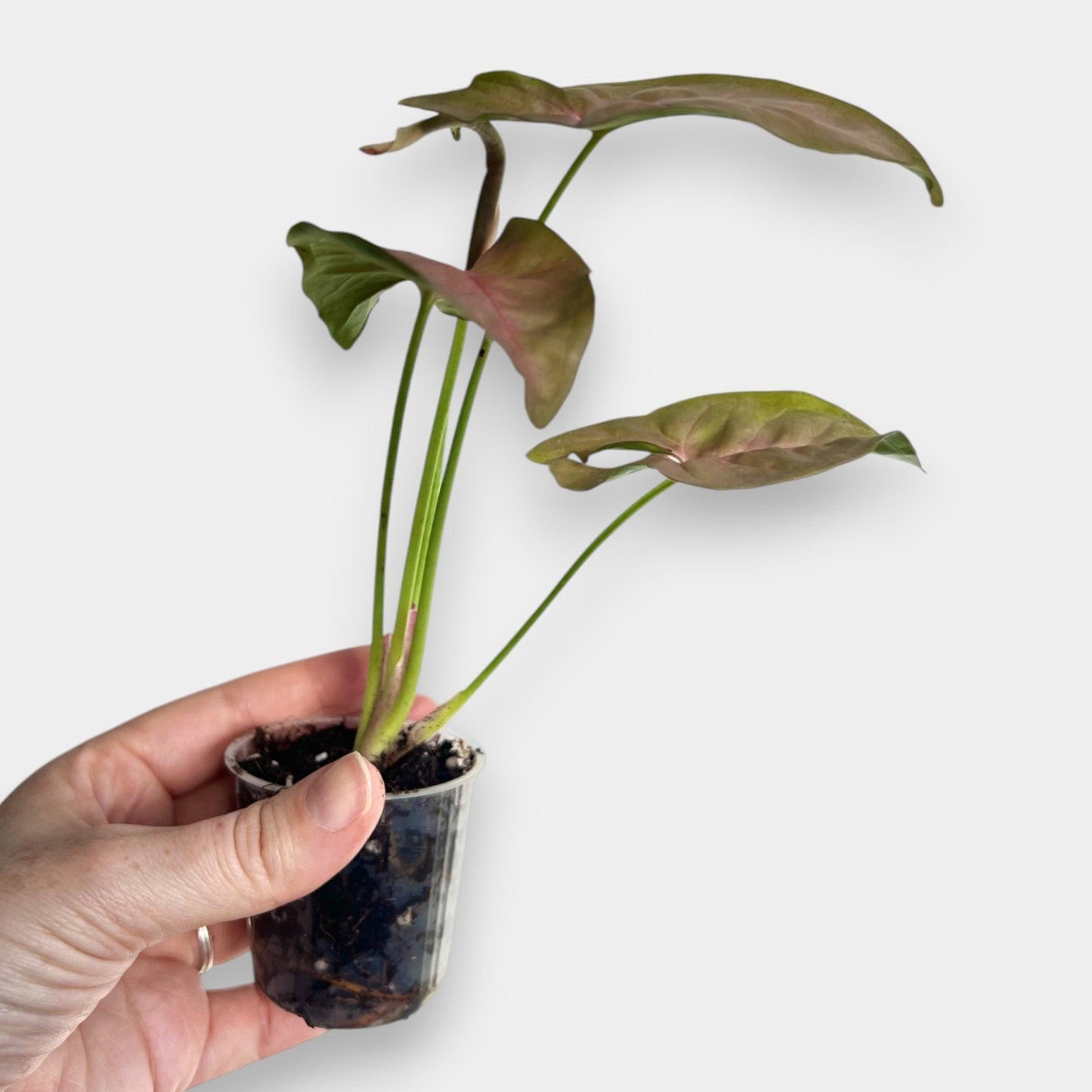
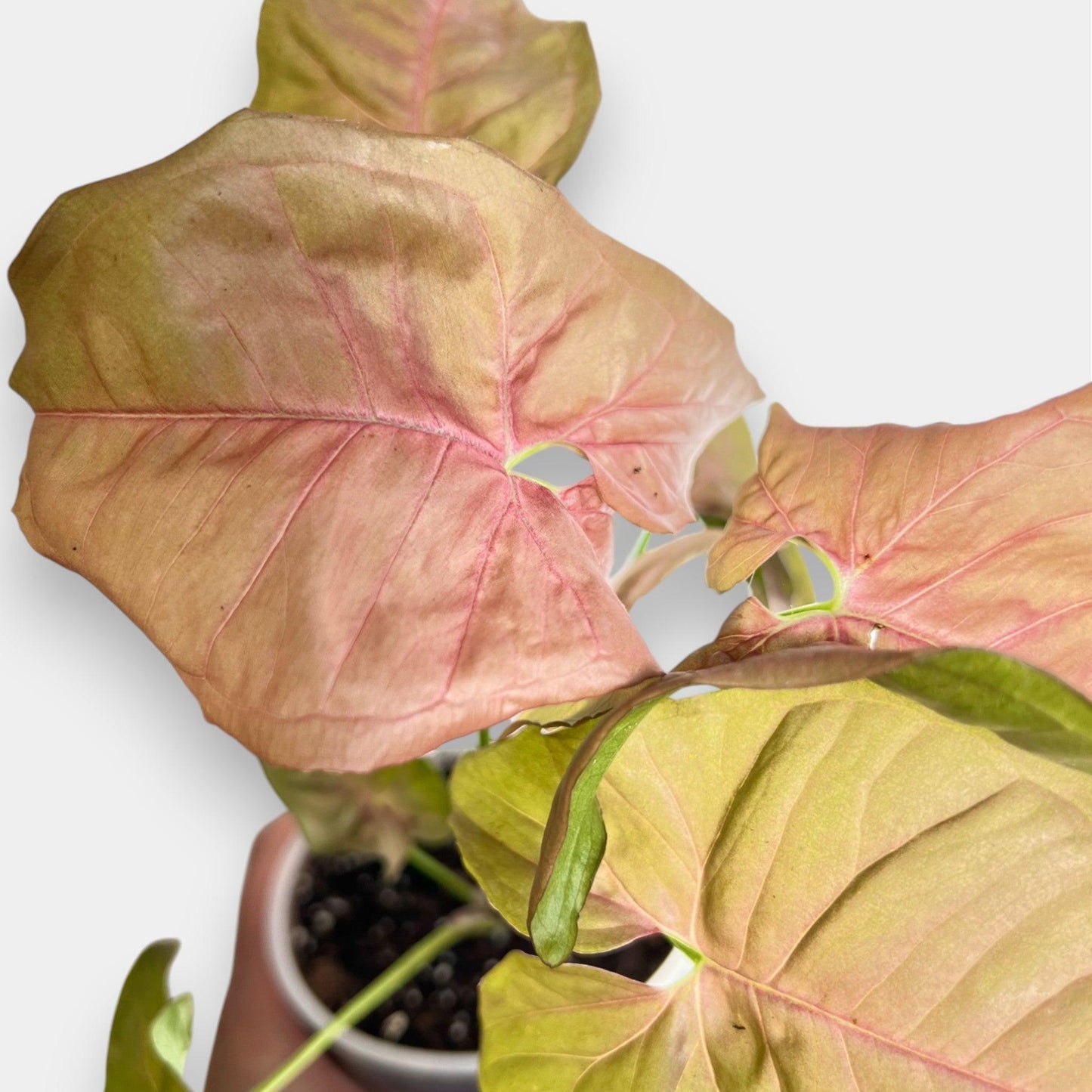
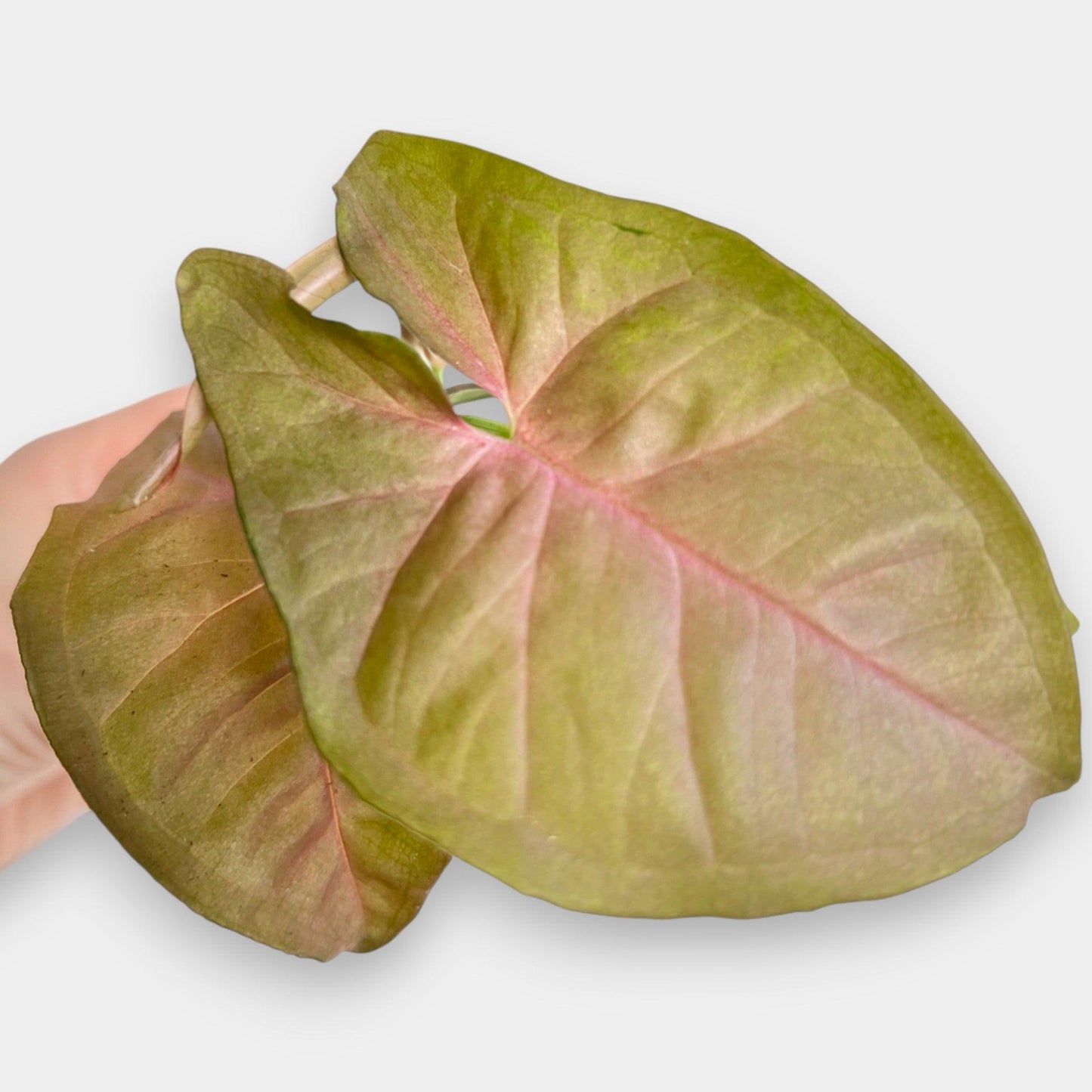

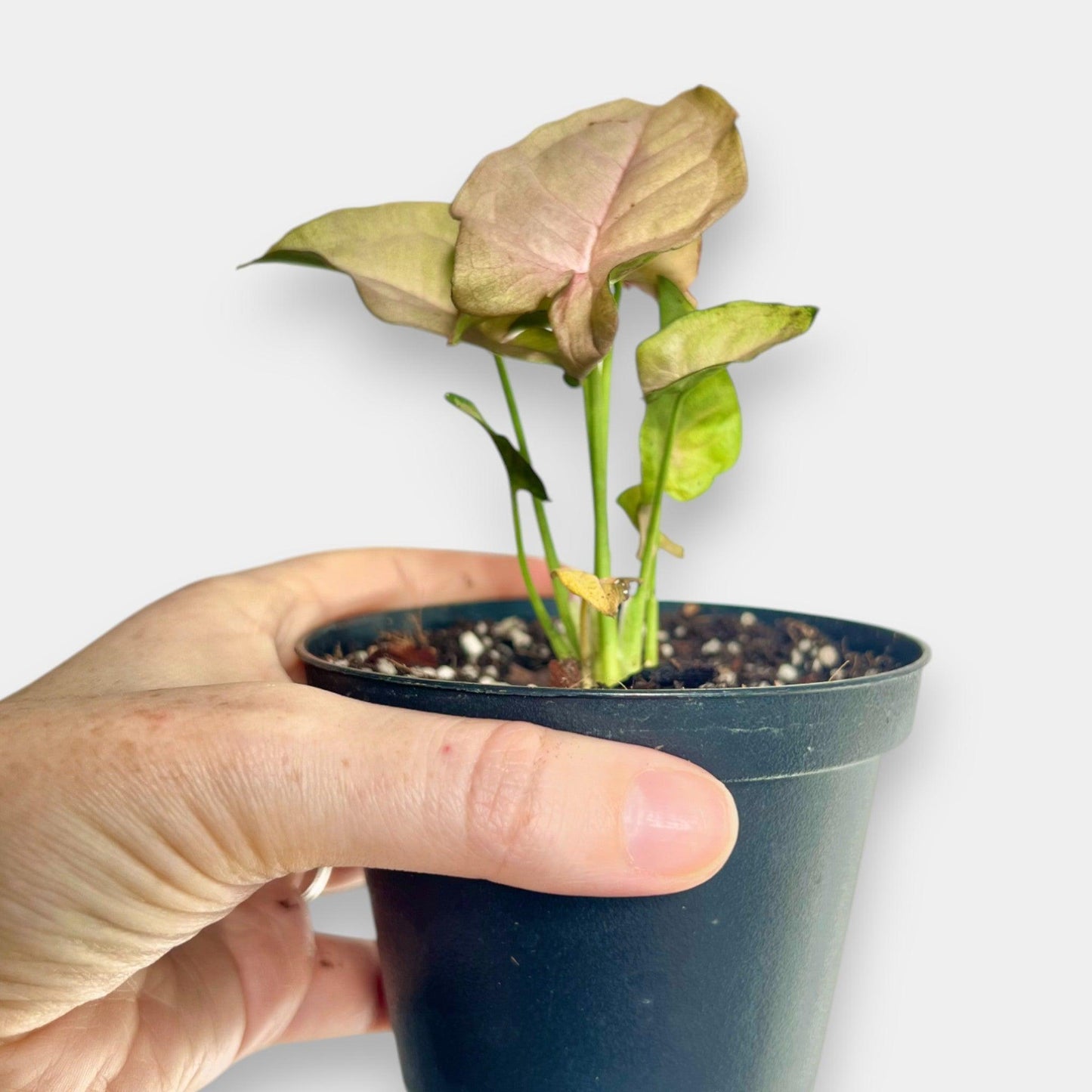
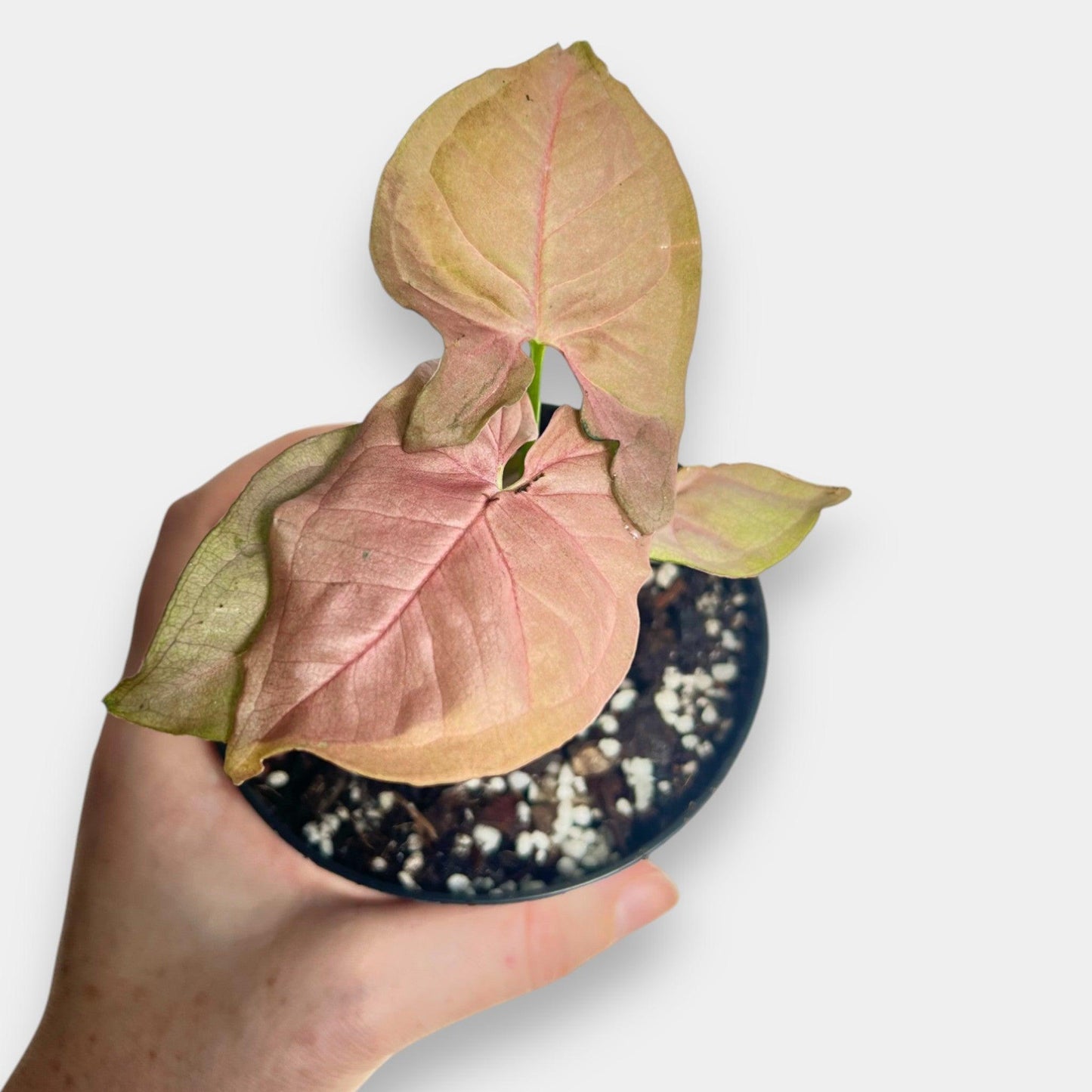
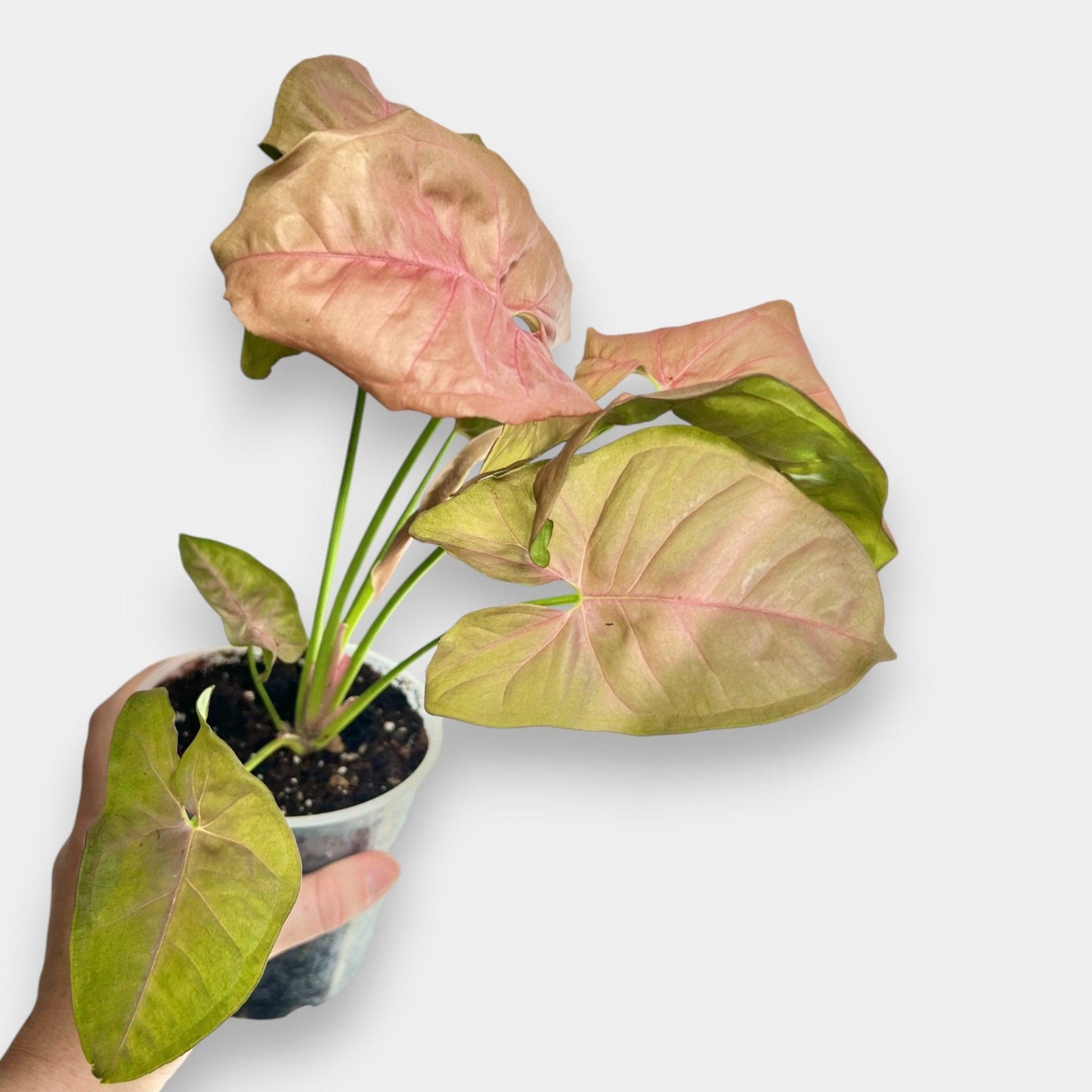
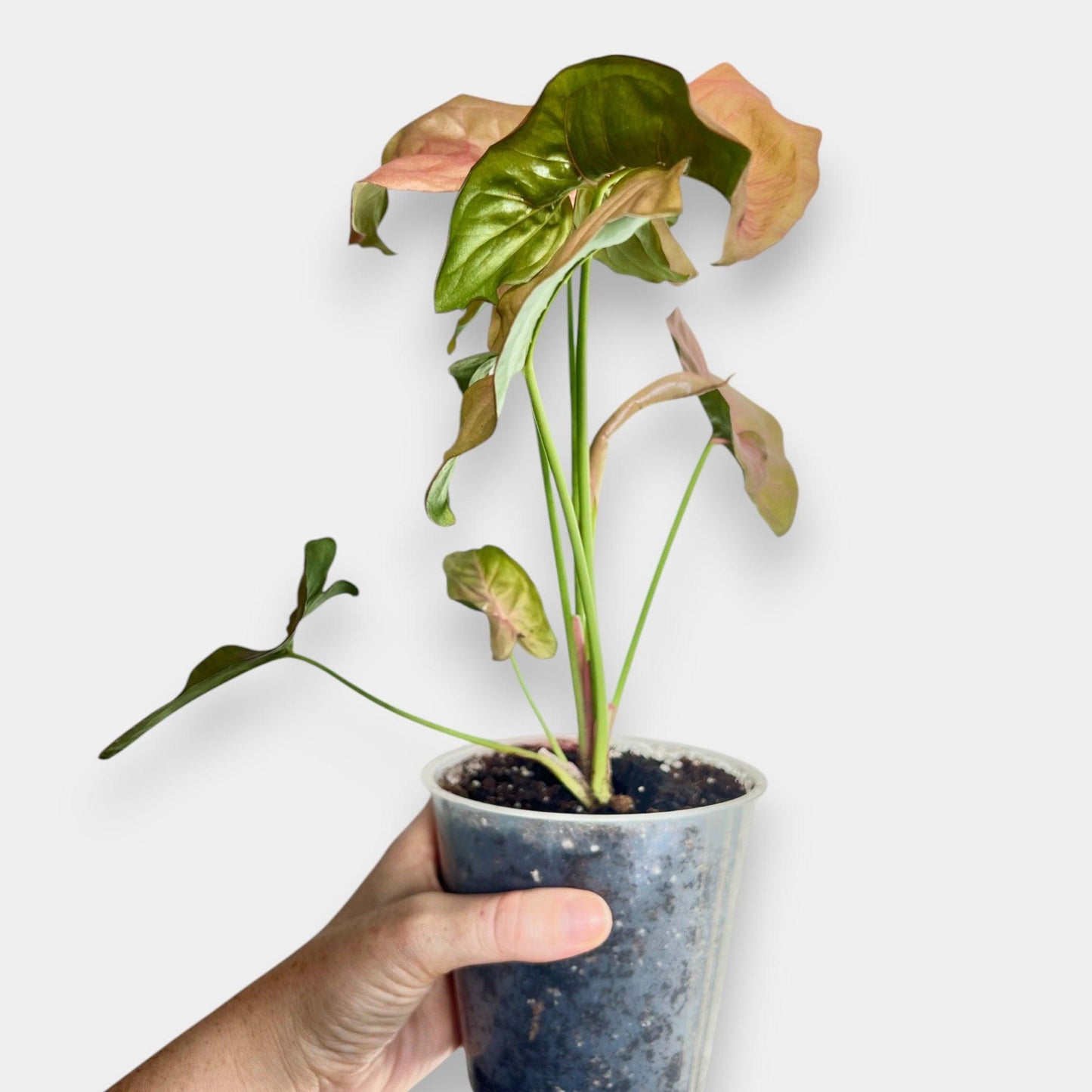

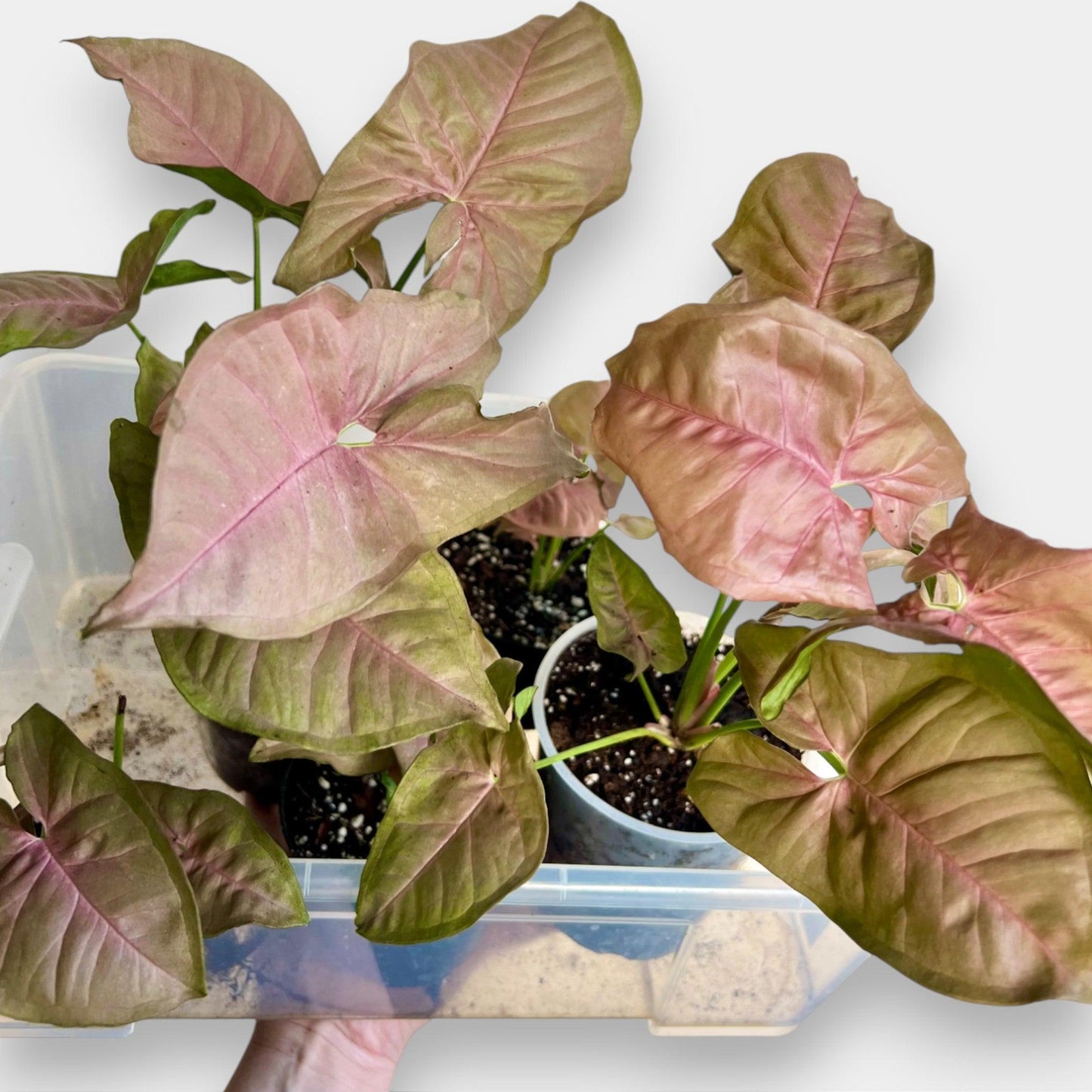

Syngonium 'Red Heart' , known for its pink, arrow-shaped leaves, is an artificially bred hybrid and does not exist in nature. Like many ornamental plants with special characteristics, it is the result of selection and hybridization created by man.
The Syngonium genus is composed primarily of plants native to the tropical forests of Central and South America, where they grow in humid, shady climates. However, varieties such as Syngonium 'Red Heart' have been created for ornamental purposes.
About the plant🪴
Characteristics of the plant
Syngonium is considered a semi-climbing or creeping plant, meaning it has a tendency to grow up vertical surfaces if given adequate support.
In nature , in tropical forests , it climbs trees using its aerial roots to hold on.
If grown indoors , you can provide support such as a moss stake or trellis to encourage vertical growth, or let it hang as a trailing plant.
Botanical information
Botanical name : Syngonium podophyllum 'Red Heart'
Popular name : Syngonium, Pink Arrow Plant
Family : Araceae
Climate : Tropical and subtropical
Countries of origin : Central and South America
Ease of growth : Ideal for beginners and intermediate green thumbs
Cultivation and care sheet
🌡️ Temperature :
- Ideal between 18-26°C
- Protect from cold and temperatures below 10°C
☀️ Light and positioning :
- Prefers bright indirect light
- Avoid direct exposure to the sun to prevent sunburn
- Place near east or west facing windows for even light
💦 Watering :
- Water moderately and allow the soil to dry slightly between waterings.
- Reduce watering during the winter months
😶🌫️ Humidity :
- It adapts to normal humidity levels, but prefers moderately humid environments
- Mist occasionally or use a humidifier, or place expanded clay pebbles in the saucer with water.
🚜 Type of soil :
- Well-draining soil , preferably a tropical plant mix with added perlite to improve drainage
🪴 Type of vase :
- Pot with drainage holes on the bottom
- A plastic or terracotta pot is preferable to promote airflow and drainage.
🚀 Fertilization :
- Fertilize during the growing season (spring and summer)
- Use a balanced liquid fertilizer every 4 weeks
Product information provided
Since plants are living beings, they may differ from the photos shown.
The plant is sold complete with professional, draining and high-quality substrate .
This means you don’t need to repot the plant until it has grown and needs a larger pot!
The transparency of the vase helps to monitor the growth and well-being of the roots and the humidity level of the soil.
Blog Posts
View all-

The importance of repotting purchased plants
You just bought a plant, what to do now? Buying a plant is always exciting, but did you know that to ensure it has a long and healthy life, it...
The importance of repotting purchased plants
You just bought a plant, what to do now? Buying a plant is always exciting, but did you know that to ensure it has a long and healthy life, it...
-
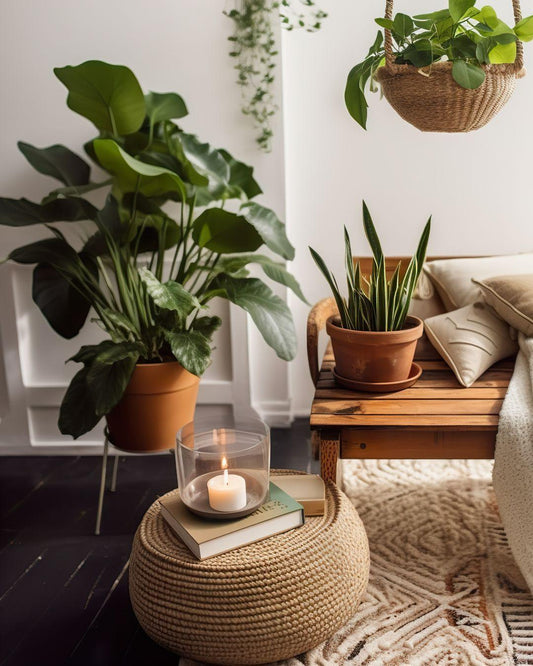
Do you know why your plants die?
Houseplants are more delicate than you think. Although they are called “houseplants,” they are actually tropical and subtropical plants that require conditions similar to their natural environments. If you've ever...
Do you know why your plants die?
Houseplants are more delicate than you think. Although they are called “houseplants,” they are actually tropical and subtropical plants that require conditions similar to their natural environments. If you've ever...
-
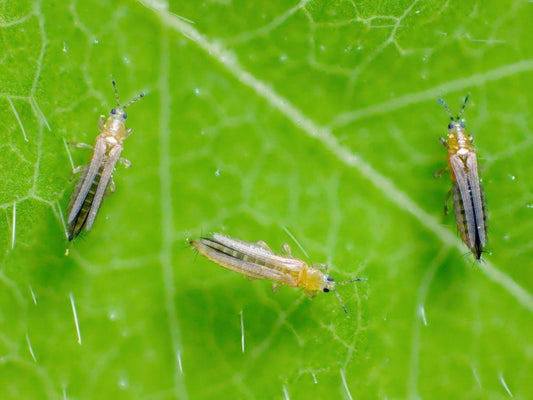
Thrips on houseplants
What they are and how to fight them Thrips can pose a significant threat to houseplants. Although they are not among the most common pests, they can become aggressive under...
Thrips on houseplants
What they are and how to fight them Thrips can pose a significant threat to houseplants. Although they are not among the most common pests, they can become aggressive under...













